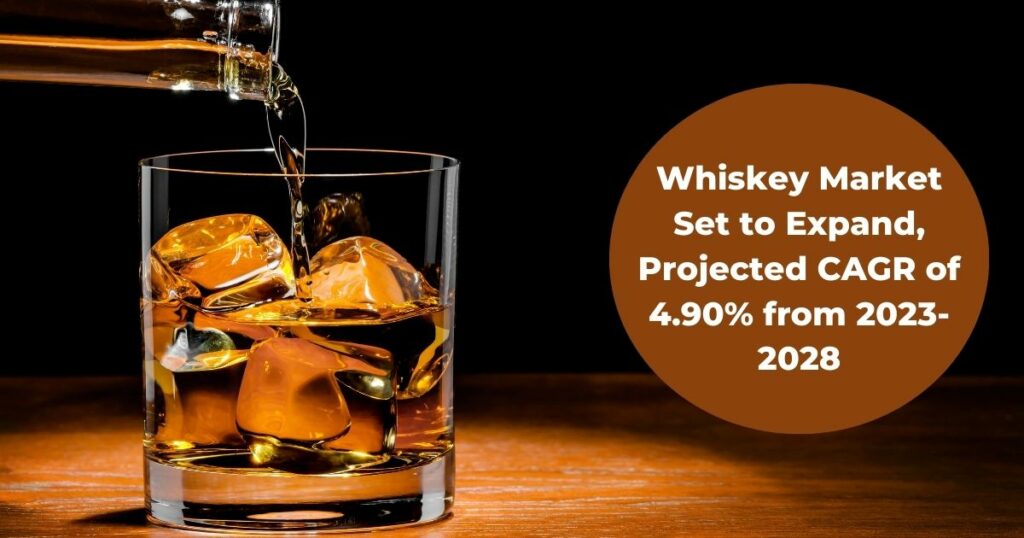The whiskey market has witnessed substantial growth in recent years, with a market size reaching nearly $62.40 billion in 2022. This upward trend is projected to continue, with a forecasted compound annual growth rate (CAGR) of 4.90% during the period of 2023–2028. The increasing consumer demand for premium spirits, evolving drinking habits, and the introduction of innovative whiskey varieties are among the key factors driving this market expansion. As whiskey continues to captivate enthusiasts and carve its place in the global beverage industry, the future holds promising opportunities for both established players and emerging brands in this dynamic and lucrative market.
History of the Whisky Market
In this section, we can provide a more detailed account of the origins and evolution of whisky production. We can discuss ancient distillation practices, such as those found in Mesopotamia or ancient Egypt, and trace the development of whisky-making techniques through the centuries. Exploring notable milestones in the whisky industry, such as the invention of the continuous still or the establishment of iconic distilleries, would add depth to the historical narrative.
Types of Whisky
To provide a comprehensive understanding of the whisky market, we can delve into each major whisky category and subcategories. For Scotch whisky, we can explain the production methods and distinctive characteristics of single malts, blended malts, and blended Scotch. Similarly, for American whiskey, we can explore the differences between bourbon, rye, and Tennessee whiskey, highlighting the legal requirements and flavor profiles of each. Irish whiskey can be examined, emphasizing the unique aspects of pot still whiskey and blended Irish whiskey. Furthermore, we can mention the growing prominence of whiskies from Canada, Japan, and India, and discuss their specific characteristics and contributions to the market.
Global Whisky Market Overview
Expanding on the global whisky market, we can explore its size, growth trends, and market segments in more detail. Providing statistics and insights into the market’s current value, projected growth, and regional distribution would offer a comprehensive overview. We can also mention key players and brands within each whisky category and highlight their market share and influence. Additionally, analyzing consumer preferences based on regions and demographics would provide a deeper understanding of the market dynamics.
Factors Influencing the Whisky Market
To better understand the market’s complexities, we can delve into the factors that shape and influence it. For changing consumer preferences, we can discuss the rise of health-consciousness and the impact of cocktail culture on whisky consumption. Marketing and branding strategies can be explored in terms of how they shape consumer perception and drive purchasing decisions. Regulatory and legal considerations can include discussions on labeling requirements, geographical indications, and trade agreements that affect whisky production and trade. Economic factors, such as currency exchange rates and taxation policies, can also be examined to understand their impact on pricing and market dynamics.
Challenges and Opportunities in the Whisky Market
In this section, we can expand on the challenges and opportunities faced by the whisky market. Competition among whisky brands can be discussed in terms of differentiation strategies, product innovation, and maintaining brand loyalty. The increasing demand for premium and craft whiskies can be explored, highlighting the opportunities it presents for niche producers. Sustainability and environmental concerns can be addressed by discussing initiatives taken by the industry to reduce their environmental footprint. Furthermore, the potential of emerging markets and the need for market expansion can be examined, taking into account cultural factors, consumption patterns, and market entry barriers.
Future Outlook and Trends in the Whisky Market
To provide insights into the future of the whisky market, we can delve deeper into emerging trends and predictions. Innovation in whisky production, such as experimenting with different grains, maturation techniques, or cask finishes, can be explored to illustrate the potential for new flavor profiles. The growing demand for rare and limited-edition whiskies can be discussed in terms of the collectors’ market, whisky auctions, and the appeal of exclusivity. Additionally, we can delve into digital marketing strategies, e-commerce platforms, and the influence of social media on whisky consumption. Changing demographics, such as the rise of new whisky-drinking markets and the impact of younger generations, can also be addressed.
Key Players and their Shares in Whisky Market
Diageo:
Diageo is a multinational alcoholic beverages company and one of the largest players in the whisky market. Their extensive portfolio includes renowned whisky brands such as Johnnie Walker, Talisker, Lagavulin, and Bulleit.
Pernod Ricard:
Pernod Ricard is another major player in the whisky market. They own popular whisky brands like Chivas Regal, Glenlivet, Jameson, and Ballantine’s. Pernod Ricard’s diverse range of whiskies caters to various consumer preferences and markets.
Brown-Forman:
Brown-Forman is known for its production of American whiskies. Their flagship brand, Jack Daniel’s, is one of the best-selling whiskies worldwide. They also own other notable whisky brands, including Woodford Reserve and Old Forester.
Beam Suntory:
Beam Suntory is a global spirits company with a strong presence in the whisky market. They produce and distribute brands like Jim Beam, Maker’s Mark, Laphroaig, and Bowmore, offering a range of American and Scotch whiskies.
William Grant & Sons:
William Grant & Sons is an independent family-owned distiller with a diverse portfolio of whisky brands. Some of their notable labels include Glenfiddich, Balvenie, Grant’s, and Monkey Shoulder. They are known for their commitment to traditional production methods and craftsmanship.
You may also like
-
Automatic Fruit Wine Bottling Line for Small Wineries: A Complete Guide
-
How Does Plywood HSN Code Decide the GST Rate for Traders and Manufacturers?
-
POS Terminal Type: Which Is Best for Your Business?
-
How to Choose Fixed and Portable Gas Monitors for Industrial Gas Detection?
-
Simplifying Trademark Registration in Hong Kong: What Businesses Need to Know

